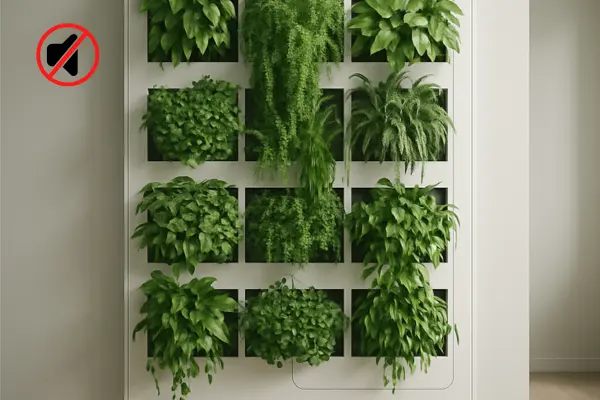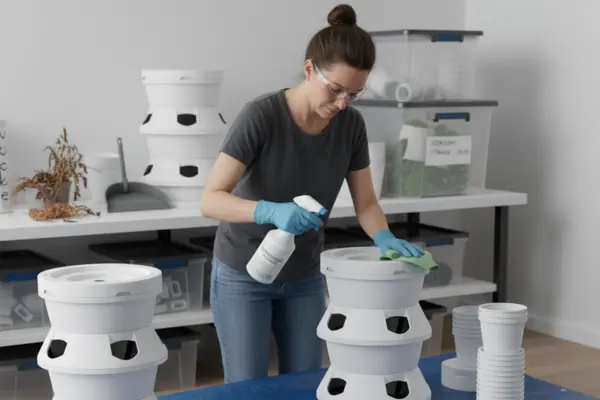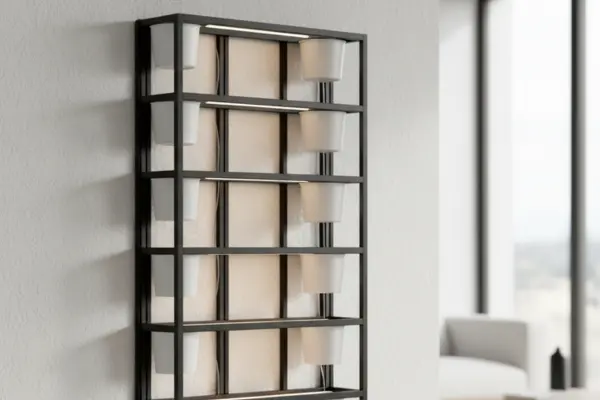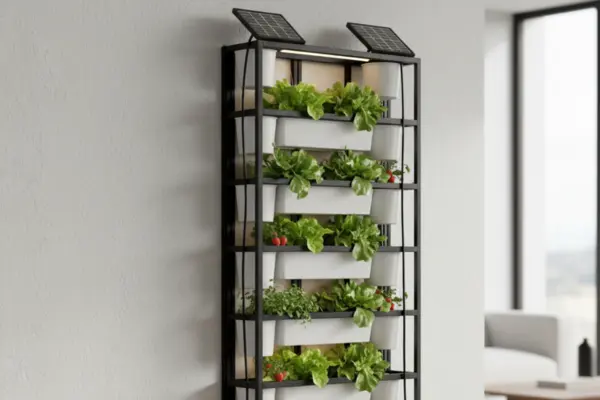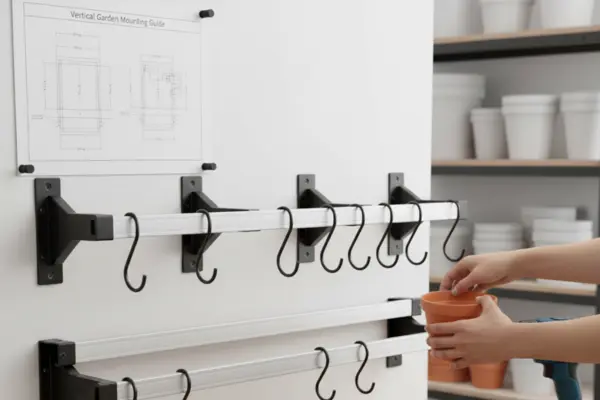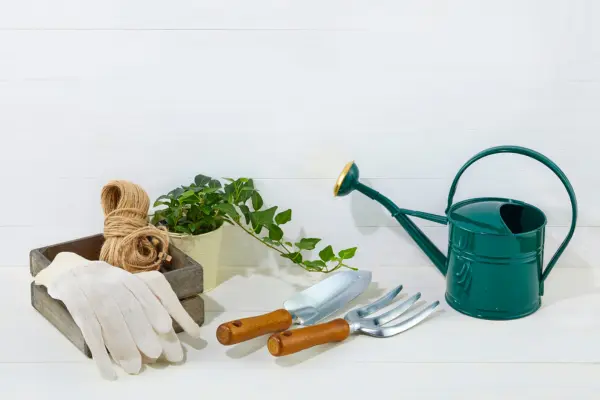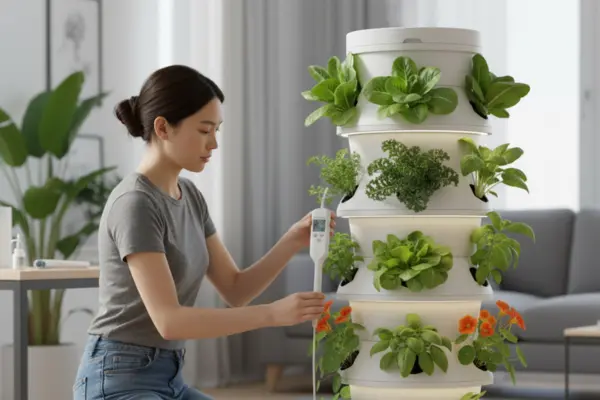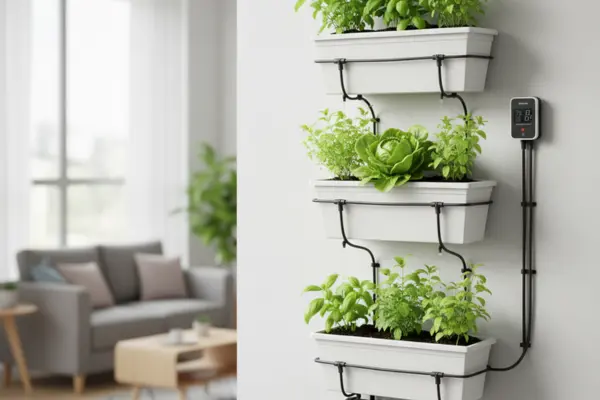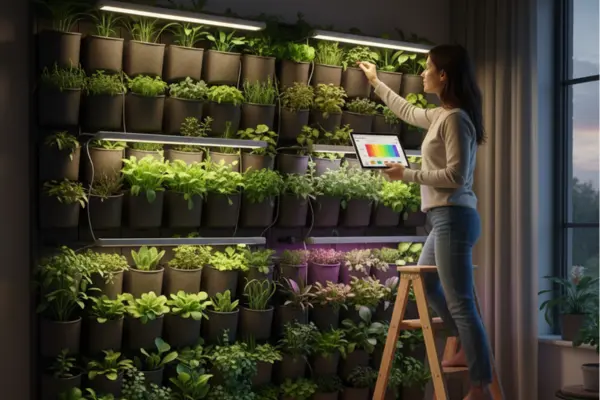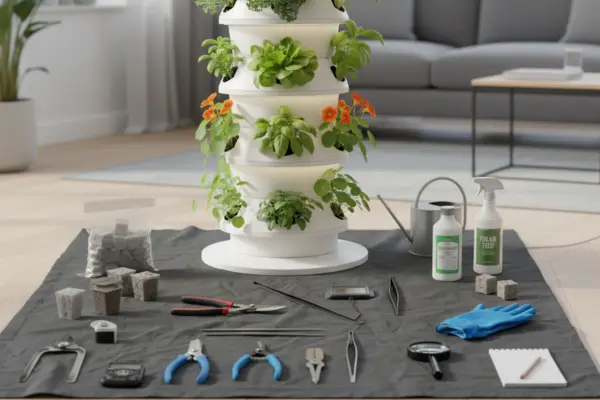A beautiful living wall should sound like… nothing. If your vertical garden hums, rattles, or gurgles, the noise usually comes from a few predictable places: pump vibration, water splash, air whine from fans, and tubing chatter. The good news: you can cut most of it with simple design choices—no expensive gear required. This guide gives …
A vertical garden is more than just plants—it’s also pumps, trays, pipes, meters, and tools. Over time, these collect dirt, algae, and even plant diseases. If you simply pack them away at the end of a growing season without cleaning, you risk starting the next season with hidden problems. That’s why sterilizing and storing your …
A vertical garden is only as strong as its frame. Whether you’re building a compact herb wall or a large outdoor display, the frame supports your planters, irrigation system, and sometimes even lighting. Choosing the right material—metal, wood, or PVC—can affect durability, cost, and overall design. This guide compares these three popular frame materials to …
Vertical gardens often need more than soil and plants—they also rely on pumps, timers, fans, and grow lights. But what if your setup is on a balcony with no outlet, a community plot without electricity, or even an off-grid cabin? That’s where portable power solutions come in. With the right setup, you can run your …
One of the most exciting parts of vertical gardening is the flexibility. Whether you’re setting up a small herb wall in your kitchen or a full display outdoors, mounting systems—like brackets, rails, and planter hooks—make it possible to design a garden that fits your space perfectly. The good news is that you don’t need expensive …
Vertical gardens may be smaller than traditional ones, but they still require the right tools to keep plants healthy and tidy. Two of the most overlooked yet essential tools are garden gloves and pruning shears. Whether you’re trimming herbs, deadheading flowers, or training climbing vegetables, these simple tools make your work safer, faster, and more …
If you’re growing vegetables, herbs, or flowers in a hydroponic vertical garden, one of the most important steps is monitoring water quality. Two key measurements are pH (how acidic or alkaline your water is) and EC (electrical conductivity, which shows nutrient levels). Without accurate readings, plants may struggle to absorb nutrients, leading to yellowing leaves, …
One of the biggest challenges in vertical gardening is watering. Because soil volume is limited, vertical setups dry out much faster than traditional beds. Hand watering can work, but it often leads to uneven moisture—plants at the top dry out while the bottom stays soggy. That’s where drip-irrigation kits come in. These systems deliver small, …
Not all vertical gardens have the luxury of full sunlight. If your setup is indoors, on a shaded balcony, or in a basement grow space, LED grow lights can make the difference between struggling plants and thriving blooms. But with so many types of grow lights available, how do you know which fixtures are right …
Building up instead of out is a smart move, especially if you’ve got a balcony, a tiny patio, or just love the look of a living wall. But vertical gardening asks a little more from your toolkit than a traditional ground bed. The right tools make installation safer, watering easier, and plant care faster. In …

